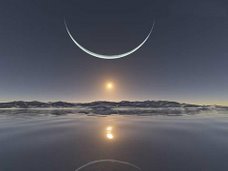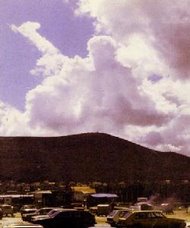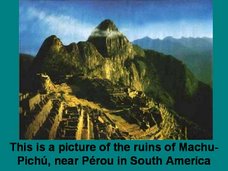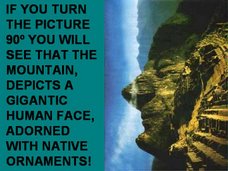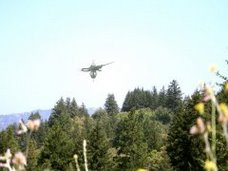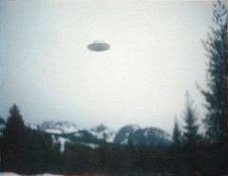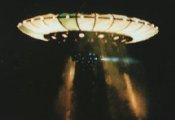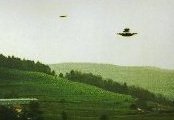 For centuries, explorers and anthropologists have speculated about the moai, the enormous stone statues scattered over Easter Island. Though science has gone far to explain what the moai are and where they came from, they still stand as a warning to those who would exploit our natural resources.
For centuries, explorers and anthropologists have speculated about the moai, the enormous stone statues scattered over Easter Island. Though science has gone far to explain what the moai are and where they came from, they still stand as a warning to those who would exploit our natural resources.First brought to the attention of the western world by the Dutch navigator Jakob Roggeveen, Easter Island is the world’s most remote inhabited place. Called “the navel of the world” by islanders, it consists of 64 square miles of dry land in the middle of the Pacific Ocean, and is located 1,250 miles from the nearest inhabited outpost of civilization—Pitcairn Island—and 2,000 miles from the South American mainland.
When Roggeveen’s three ships landed on the island on Easter Sunday, 1722, the native population numbered a mere 400. No trees over ten feet grew anywhere on the island, the indigenous inhabitants had but few food resources, and their technology was limited to stone, bone, an
 d shell tools. Despite the dearth of resources, the islanders had somehow managed to erect almost 900 moai, which stood looking inland from the coasts with their sightless eyes.
d shell tools. Despite the dearth of resources, the islanders had somehow managed to erect almost 900 moai, which stood looking inland from the coasts with their sightless eyes.How could the enigmatic moai—the smallest of which weighs several tons, and some of which are over 65 feet tall and weigh more than 80 tons—have been created by a stone-age culture, and for what purpose? The answer to the mystery is a blend of anthropology, environmental science, and engineering that, if anything, is even more fascinating than the tales.
According to local legend, in about 400 AD, the Polynesian king Hotu Matu’a sent seven young men eastward to look for a new homeland for his people. The place they found was Easter Island.
The people of Easter island thrived from the 11th to the late 17th centuries, with a top population of about 12,000. In those days, the island was thickly forested with palm trees, which were used to make canoes for fishing, nets, and ropes, and also to provide a home for nesting birds.
Though the trees had long since been cleared by the time the first Europeans visited the island, archaeologists have found remains of their pollen, as well as the bones of the porpoises and birds that provided an important part of the native diet. The trees were also a critical element in an economy, as it gave the islanders enough time and energy to carve, transport, and raise the moai.
By carbon-dating artifacts, such as fragments of wood found in association with the stones, scientists have determined that the majority of the enigmatic stone statues were built in the 14th and 15th centuries, cut from the tuff (a type of light volcanic stone) with pickaxes made of basalt, a harder volcanic stone.
Archaeologists supposed that the Easter Islanders used sleds and log rollers to move the heavy stone statues. In fact, the amount of lumber needed to move the moai into their existing positions around the island from where they were quarried is probably what caused the island’s deforestation.
However, the islanders insisted that the moai had been moved by their chiefs’ mana (a mysterious cosmic power that seemed to carry with it dominion over the material world) which caused the stones to “walk” to their current location. They also believed that the statues themselves were endowed with their own mana, which they emitted from their coral eyes to protect the island from harm.
Explorer Thor Heyerdahl thought there might be some truth to the legend so, in 1985, he put it to the test. Because of the moai’s pot-bellied construction, they have a low center of gravity, making them difficult to tip over. Heyerdahl’s team rigged a fallen moai up in a gurney and, by having alternate teams pull on ropes, they were able to “walk” the moai forward about seven yards. (We can do this when we walk a heavy piece of furniture into a corner of our house.)
The end of the moai-building period coincided with Easter Island’s great environmental disaster when the islanders ran out of palm trees around 1400. Without the trees, they could not build canoes for fishing, nor make ropes for moving moai, and they had no wood for fires. With no place to roost, the birds moved on and consequently, there were no birds or eggs to eat.
The crisis of belief this brought about was profound; angry that their idols were unable to protect them from this environmental disaster, the natives removed the coral eyes of the moai and buried many of the statues. The conflict was ended by a novel contest: a representative from each tribe was to swim a mile to the neighboring islet Moto Nui. The first to return with the egg of a sooty tern earned the right to distribute the island’s resources for the year. Europeans brought sheep and other goods to the island in the 18th century, which helped the islanders’ situation, but the newcomers were a plague as much as they were a boon, as the island’s population was once again decimated by slave-raiding in the 19th century.

Despite archaeologists’ insights into the construction of the moai, mysteries remain. The islanders’ writing, called rongo rongo, has never been translated. Only about 21 examples of this writing exist today. In the 1930s, Hungarian linguist Guillaume de Hevesy pointed out the writing system’s similarity to certain signs and symbols used by the ancient Harappan culture of the Indus Valley, in modern Pakistan, suggesting that the advanced Harappan civilization may have been the ancestors of the original Polynesian settlers.
Most significantly, Easter Island stands as a warning to us. The moai, examples of spiritual power embodied in material things, were raised by tribal leaders hungry to declare their power and status. As a result of this race to consume resources, the island was deforested and its civilization plunged into chaos. Before long, the islanders were not only unable to build moai, but also unable to obtain the necessities of life. As such, the mysteries of Easter Island stand as a warning to our present culture of conspicuous, mindless consumption.






